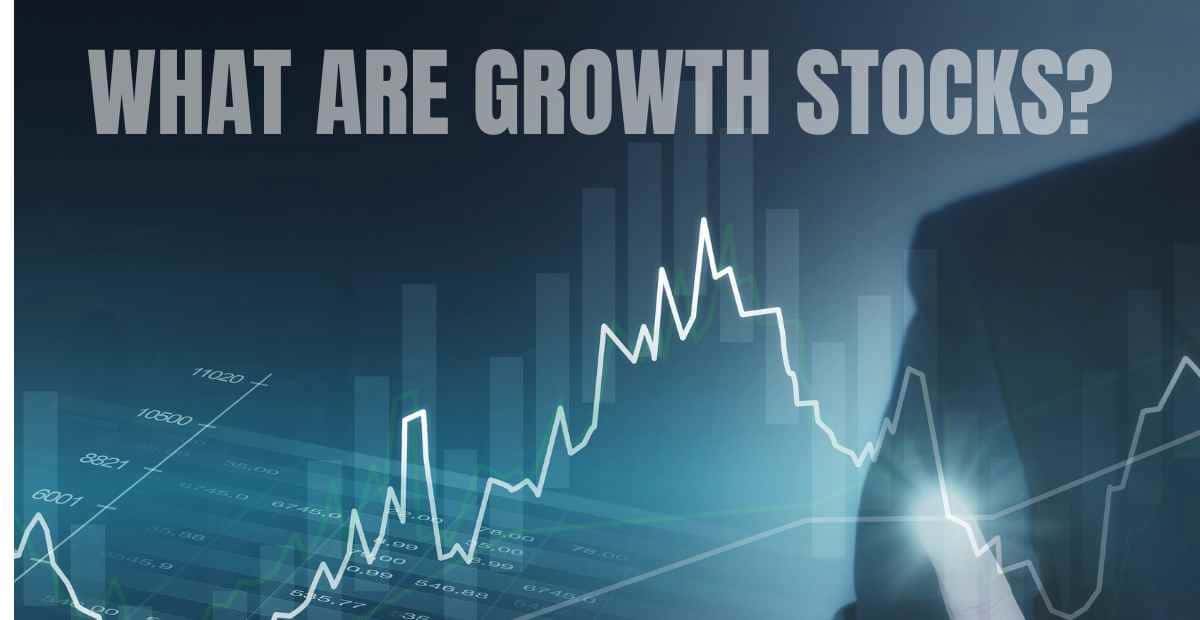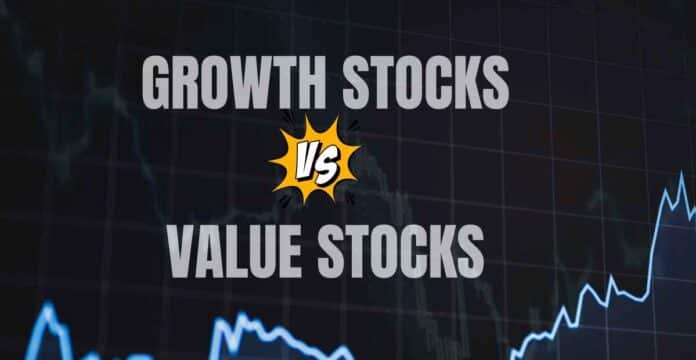Investors often find themselves debating between growth stocks and value stocks when building their portfolios. Each category offers unique advantages and risks, making it crucial to understand their characteristics, performance, and suitability for different investment strategies. In this in-depth analysis, we explore the key differences, advantages, and historical performance of growth and value stocks to help investors make informed decisions.
What Are Growth Stocks?

Growth stocks are shares of companies that are expected to grow at a faster rate than the overall market. These companies typically reinvest their earnings into expanding operations, developing new products, or entering new markets rather than paying dividends to shareholders.
Key Characteristics of Growth Stocks
• High Revenue and Earnings Growth – Growth stocks exhibit strong sales and profit expansion.
• Premium Valuation – They often trade at high price-to-earnings (P/E) ratios, price-to-sales (P/S) ratios, and other valuation metrics.
• Innovation-Driven – Frequently found in technology, healthcare, and consumer discretionary sectors.
• Low or No Dividends – Companies reinvest earnings instead of distributing them as dividends.
• Market Sensitivity – Tend to be more volatile and react sharply to economic cycles and interest rate changes.
Pros and Cons of Growth Stocks
Advantages
• Potential for higher returns compared to value stocks.
• Ideal for long-term investors with high risk tolerance.
• Outperform in bull markets due to rapid earnings growth.
Disadvantages
• Higher volatility and market sensitivity.
• Expensive valuations may lead to potential overpricing.
• Dependence on favourable economic conditions for sustained growth.
What Are Value Stocks?
Value stocks are shares of companies that trade at prices lower than their intrinsic value. These stocks are often undervalued due to temporary challenges but possess strong fundamentals that indicate potential for future price appreciation.
Key Characteristics of Value Stocks
• Low Valuation Metrics – Trade at low P/E, P/B (price-to-book), and P/S ratios.
• Stable and Established – Found in mature industries such as finance, consumer goods, and energy.
• Higher Dividend Yields – Many value stocks provide regular dividend income.
• Less Volatile – Generally more stable during economic downturns.
• Contrarian Investing – Often overlooked by the market, creating buying opportunities.
Pros and Cons of Value Stocks
Advantages
• Lower downside risk due to strong fundamentals.
• Attractive for income-focused investors due to dividends.
• Perform well in bear markets and economic recessions.
Disadvantages
• Slower price appreciation compared to growth stocks.
• Can remain undervalued for long periods.
• Susceptible to value traps, where stocks appear cheap but lack growth potential.
Growth Stocks vs. Value Stocks: Historical Performance
Historically, growth stocks have outperformed during periods of economic expansion and low interest rates, whereas value stocks have excelled during economic recoveries and market corrections.
Key Performance Trends
• 1990s Tech Boom – Growth stocks led the market due to innovations in technology.
• 2000s Dot-Com Crash – Value stocks outperformed as growth stocks collapsed.
• 2010s Bull Market – Growth stocks, particularly in technology, dominated the decade.
• 2020s Post-Pandemic Trends – Rising interest rates shifted momentum towards value stocks.
How to Choose Between Growth and Value Stocks
1. Risk Tolerance
• High risk tolerance? Growth stocks offer higher returns but increased volatility.
• Low risk tolerance? Value stocks provide stability and income through dividends.
2. Investment Horizon
• Long-term investors (10+ years): Growth stocks can deliver exponential gains.
• Short-to-medium-term investors: Value stocks offer steady returns and lower volatility.
3. Market Conditions
• Bull Markets & Low Interest Rates: Growth stocks tend to outperform.
• Bear Markets & High Interest Rates: Value stocks generally perform better.
Best Strategies for Combining Growth and Value Stocks
Diversified Portfolio Approach
A balanced strategy includes both growth and value stocks to hedge risks and capitalize on various market conditions.
Sector-Based Allocation
Investors can allocate funds to growth-heavy sectors like technology and healthcare while including value-oriented sectors like financials and consumer staples.
Dollar-Cost Averaging (DCA)
Investing at regular intervals helps reduce risk and ensures participation in both market ups and downs.
Conclusion
Both growth stocks and value stocks have their place in an investment portfolio. While growth stocks offer the potential for substantial capital appreciation, value stocks provide stability and income. Understanding market conditions, personal risk tolerance, and investment horizons is key to making informed decisions.

A writer, editor, and publisher with a knack for crafting informative articles.

